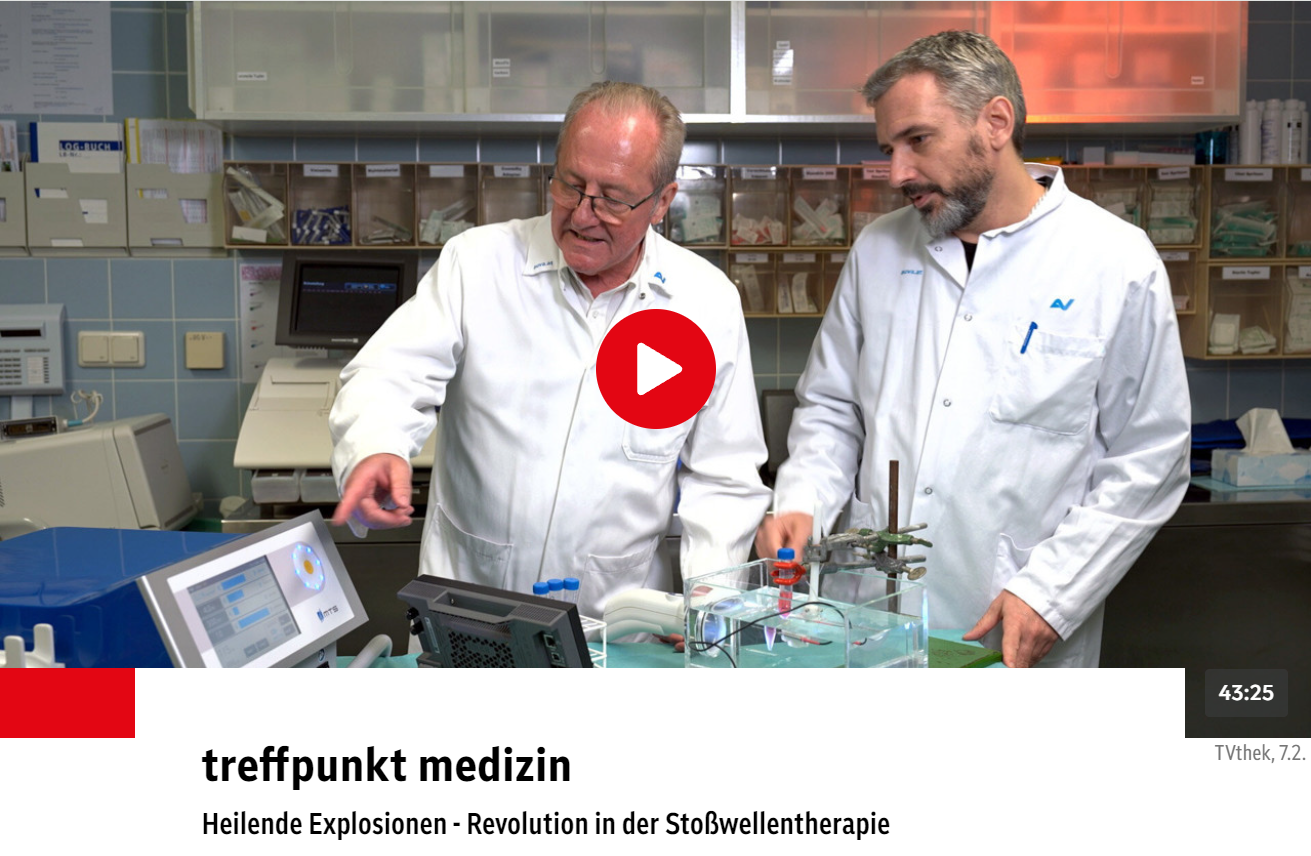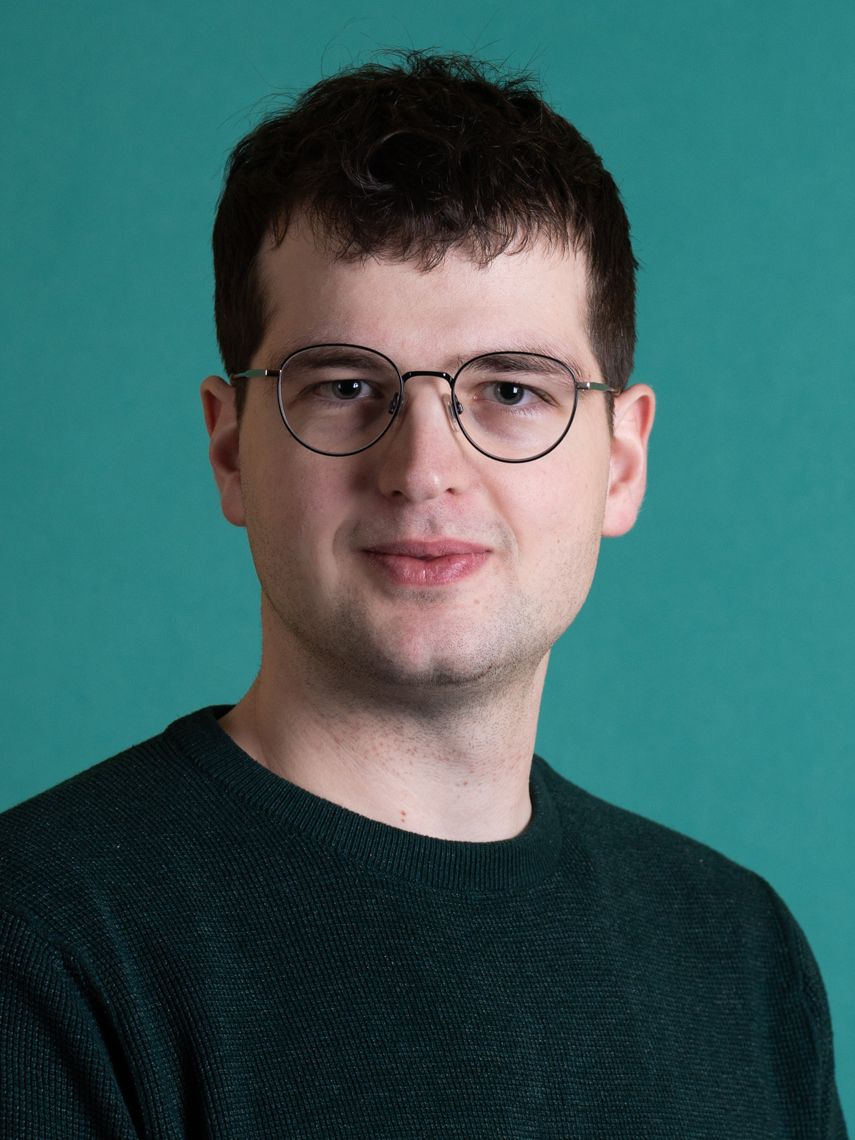Extracorporeal Shockwave
For several decades since its discovery, shock wave therapy has been undergoing an astonishing transformation. It is a destructive procedure that allowed the extracorporeal shock wave to enter medicine. In the 1980s, kidney stone fragmentation using shock waves revolutionised urology. However, the documentation of all the side effects of the novel treatment made it clear that the shock wave stimulates the healing of bone fractures far beyond the extent of normal healing.
The fact that Austria is now a world leader in the treatment of non-healing fractures is thanks to the initiative of Wolfgang Schaden. The former senior physician at the Vienna Trauma Centre in Meidling is regarded as a pioneer of shock wave research in traumatology. His pioneering research at the Ludwig Boltzmann Institute of Traumatology and the AUVA led to the founding of the European and later International Society for Extracorporeal Shockwave Therapy (ISMST).
Shock wave treatment is already routine in AUVA accident hospitals. It is used as a preventative measure for particularly complicated fractures that are expected to show disruptions of the healing process. For a long time, it was assumed that the regenerative effects of the shock wave were linked to the many microscopic injuries that stimulate healing. However, these microtraumas have never been proven. Instead, studies at the LBI Trauma in collaboration with the University of Applied Sciences Technikum Vienna describe various cellular effects of the shock wave that could explain its healing properties.
ORFIII devoted a 45-minute documentary to the healing explosions of the shock wave in the programme “Treffpunkt Medizin”. The programme can be viewed on our website with the kind permission of ORF.
Selected Publications
Flatscher J, Pavez Loriè E, Mittermayr R, Meznik P, Slezak P, Redl H, Slezak C (2023). Pulsed Electromagnetic Fields (PEMF)-Physiological Response and Its Potential in Trauma Treatment. Int J Mol Sci. 2023 Jul 8;24(14):11239.
(free PDF)
Slezak C, Anderson K, Hillock T, Miller M, Dungel P, Kopp O, Sterflinger K, Slezak P (2022). Shockwaves Increase In Vitro Resilience of Rhizopus oryzae Biofilm under Amphotericin B Treatment. Int J Mol Sci. 2022 Aug 17;23(16):9226.
(free PDF).
Heinzel JC, Oberhauser V, Keibl C, Schädl B, Swiadek NV, Längle G, Frick H, Slezak C, Prahm C, Grillari J, Kolbenschlag J, Hercher D (2022). ESWT Diminishes Axonal Regeneration following Repair of the Rat Median Nerve with Muscle-In-Vein Conduits but Not after Autologous Nerve Grafting. Biomedicines. 2022 Jul 22;10(8):1777.
(free PDF).
Slezak C, Flatscher J, Slezak P (2022). A Comparative Feasibility Study for Transcranial Extracorporeal Shock Wave Therapy. Biomedicines. 2022 Jun 20;10(6):1457.
(free PDF).
Mittermayr R, Haffner N, Eder S, Flatscher J, Schaden W, Slezak P, Slezak C (2022). Safe and Effective Treatment of Compromised Clavicle Fracture of the Medial and Lateral Third Using Focused Shockwaves. J Clin Med. 2022 Apr 2;11(7):1988.
(free PDF).
Slezak C, Rose R, Jilge JM, Nuster R, Hercher D, Slezak P (2021). Physical Considerations for In Vitro ESWT Research Design. Int J Mol Sci 2021 Dec 28;23(1):313..
(free PDF)
Rohringer S, Holnthoner W, Hackl M, Weihs AM, Rünzler D, Skalicky S, Karbiener M, Scheideler M, Pröll J, Gabriel C, Schweighofer B, Gröger M, Spittler A, Grillari J, Redl H (2014). Molecular and cellular effects of in vitro shockwave treatment on lymphatic endothelial cells. PLoS One 2014 Dec 11;9(12):e114806..
(free PDF)


